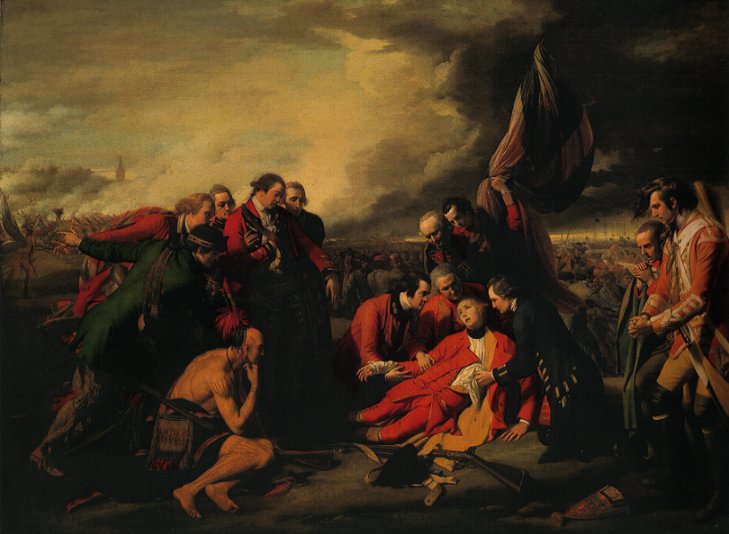

The body of James Wolfe was removed from the Plains of Abraham via the same treacherous path that the army had marched up a few hours earlier, down to L'Anse au Foulon and put on board of the Lowestoft. Wolfe's body was embalmed and sent back to England. He was buried on the 20th of November in the family vault.
James Wolfe was buried in Greenwich, London,
England at Saint Alfege's Church. His crypt is under the "Canadian Corner".
The memorial plaque that marks his burial
spot is engraved as follows:
TO THE GLORY OF GOD AND
TO THE MEMORY OF
JAMES WOLFE
MAJOR-GENERAL
BORN AT WESTERHAM IN
KENT 2 JANUARY 1727: DIED
VICTORIOUS ON THE HEIGHTS
ABOVE QUEBEC 13 SEPTEMBER 1759
THEREBY ADDING CANADA TO THE
EMPIRE. HE AS BURIED BENEATH
THIS SPOT 20 NOVEMBER 1759
The siege and capture of Quebec City by General Wolfe turned out to be a victory which changed the destiny of the North American continent by defeating the French and gaining Canada for England.
Prime Minister Pitt requested that a monument be erected in honour of James Wolfe, the national hero. The monument, of white marble stands in the Chapel of St. John the Evangelist and reads:
TO THE MEMORY
OF
JAMES WOLFE
MAJOR-GENERAL AND COMMANDER-IN-CHIEF
OF THE
BRITISH LAND FORCES,
ON AN
EXPEDITION AGAINST QUEBEC,
WHO,
AFTER SURMOUNTING BY ABILITY AND VALOUR
ALL OBSTACLES OF ART AND NATURE
WAS SLAIN IN THE MOMENT OF VICTORY,
ON THE
XIII OF SEPTEMBER, MDCCLIX
THE
KING AND PARLIAMENT OF GREAT BRITAIN
DEDICATE THIS MONUMENT (Dent, 228).
Works Cited